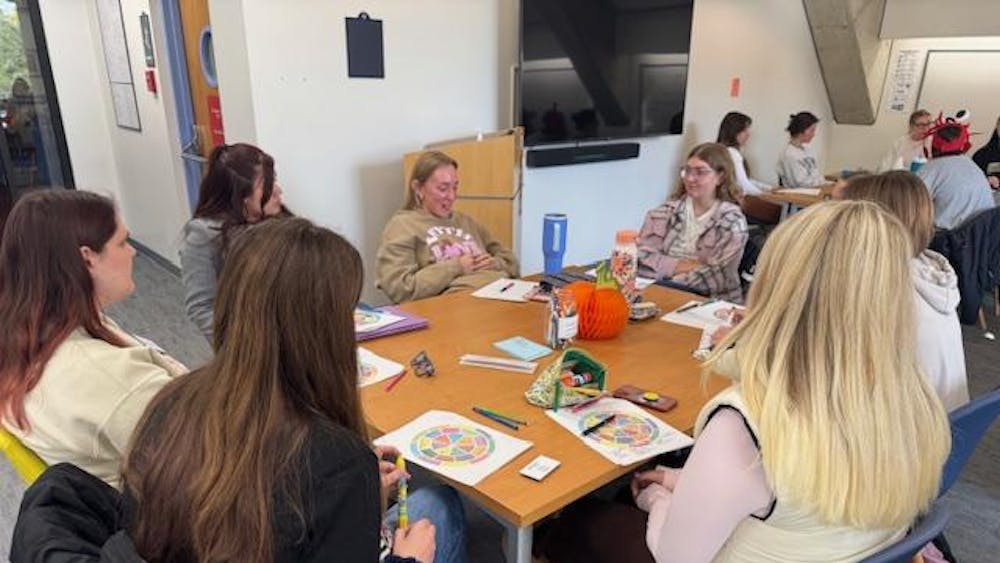Eric Lease Morgan, digital initiatives librarian, gave a featured lecture Thursday on the strategy and importance of “active reading,” a form of reading with ample annotations designed to maximize comprehension.
Before the event, he pointed to a yellow poster on Hesburgh Library’s second floor, a picture of someone’s annotations in “Divine Comedy.” He said that anyone can leave their comments on any work, similar to the photograph, and it may leave positive impressions on future readers.
Morgan started the lecture by noting that he does not condone writing in library books.
“If you write in the book, and then someone comes out from behind you and looks at the book, the second person might feel distracted from what they’re looking at,” he said. He also said that some library texts may be of high worth — any writing would depreciate the value.
He also stressed the importance of printed works, rather than digital copies, pointing to their ease of accessibility. He said active reading is most effective in comprehending personally-owned books, journal articles and news stories.
Morgan then turned to techniques to enhance one’s active reading. Before he showed specifics, he provided a handout to the lecture’s attendees and read a passage aloud.
“For the most part, books are containers for data and information, and as such they are not sacred items to be worshiped, but instead things to be actively used,” he said. “By actively reading and writing in books, a person can not only get more out of their reading, but a person can add value to the material, as well as enable themselves to review the material quickly.”
Morgan said that writing symbols is the best way to strengthen one’s active reading. He said that their simple structures convey the right amount of information to remember the text’s significance. They also help in remembering content long term, according to Morgan.
He then shared the personalization one can make of active reading, and the abundance of meanings one can uncover.
“If you go through and you scribble on your stuff, then the scribbles have [different] kinds of meanings. It’s very easy for you to go back and find out particular pieces of information,” he said.
He then said that symbols should be simple and formulaic. His most-used symbols convey straightforward ideas to ease understanding without having to excessively reread.
“A line is something that is defined or a definition, rather … If I circle an item, that’s an idea of interest and idea, as opposed to a square thing, which is like a name of a person, thing or government,” he said. He also shared an example of a cross indicating a faith-based idea, to show the intuitive nature of its meaning.
He concluded the lecture, noting that active reading is crucial in being able to discuss texts. He said he can “guarantee” that active reading allows for efficient revisiting of texts — especially when practicing with personal symbols.
“Use your own symbols, come up with your own ideas,” he said.










